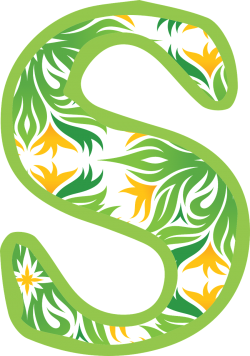Seemingly Similar “S” Words
 Image by Stefania Grieco from Pixabay
Image by Stefania Grieco from PixabayAs we near the series on confusing words, we come to S.. .
Say/Tell – Both involve moving the lips or hands, but they are different; and you probably use them correctly without even realizing it. To say is to speak something, and it sometimes has a direct object, but not an indirect object. Tell usually involves relating something to someone else. It usually has a direct object and often an indirect object as well. Say it out loud. (Direct object it). She says it is going to rain tomorrow. Tell me a story. (Direct object story; indirect object me.) You just wouldn’t say Tell it out loud or Say me a story.Set/Sit – This pair is like lay and lie. One of the pair takes a direct object and the other doesn’t. Set is used with an object. Sit isn’t. Sit on the chair. Set your book on the chair. Shall/Will – This distinction is pretty much gone from our language except in legal writing, where they are different. Shall, in legal terms, has a special implication of obligation. In formal writing, shall is used with the first-person pronouns only — if you want to get that formal. I shall be back soon. We shall be back soon. You will be back soon. They will be back soon. And so on. Shined/Shone – Both of these words are acceptable past tense forms of shine. If you are going to make a distinction, it is this: Shined is more often used with a direct object and shone without: I shined my shoes before my interview. The sun shone this morning, but now it is raining. Sole/Soul – Soul is the spiritual essence of a person. All other soles are spelled like this: I had fillet of sole for dinner. The sole of my foot hurts. She is the sole hiker daring enough to climb the mountain.Sometime/Sometimes/ Some Time – Sometime means at some future time. Sometimes means some of the time. Some time means an amount of time. You should come to California to visit sometime. Sometimes I think I would love to visit California. Do you have some time to visit me this summer?Stationary/Stationery – Teachers have a few tricks to help their students learn the difference between these two: Stationary with the A refers to place, (but place also has an E). Stationery is paper, which also has both A and E. Go figure. I use my stationary bike every day. Stationery has pretty much gone out of style with e-mail.Statue/Stature/Statute – A statue is the three-dimensional piece of art in the park. Stature is something or someone’s height or an achievement gained. Statute is a permanent rule or enactment passed by a legislative body. The Confederate statue has been removed. Although small in stature, she was a powerful woman. The statute says that there will no alcohol on the premises.Suppose to/Supposed to – Easy. The correct phrase is supposed to. I am supposed to be at my appointment in an hour.Sure and/Sure to – Another easy one. Sure to is the correct phrase: Be sure to clean your room (NOT Be sure and clean your room. It is like try to versus try and.)
Published on February 19, 2021 13:11
No comments have been added yet.



